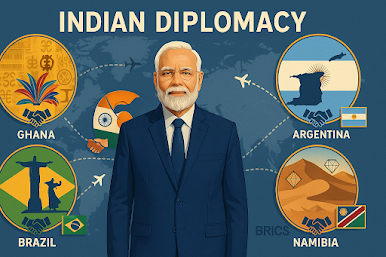Chinese Startup Z.ai Launches Cheaper Open-Source Model: A Game-Changer in the AI Cost War
The artificial intelligence landscape has been shaken once again by a Chinese startup's bold move to democratize AI access through aggressive pricing and open-source innovation. Z.ai, formerly known as Zhipu, has launched its revolutionary GLM-4.5 model family, positioning itself as a formidable challenger to established players like OpenAI and even the recently dominant DeepSeek.
The Cost Revolution Continues
In a sector where pricing wars have become the new battleground, Z.ai has fired the latest salvo with GLM-4.5's remarkably competitive pricing structure. The model costs just $0.11 per million input tokens and $0.28 per million output tokens, significantly undercutting DeepSeek R1's pricing of $0.14 per million input tokens and $2.19 per million output tokens. This represents an impressive 87% cost reduction compared to DeepSeek's output token pricing, making advanced AI capabilities more accessible to businesses and developers worldwide.
Technical Efficiency Meets Strategic Design
What makes GLM-4.5 particularly noteworthy is its technical efficiency. The model operates on approximately half the computational resources of DeepSeek's offering, requiring only eight Nvidia H20 chips to function effectively. This efficiency is not just about cost reduction; it represents a fundamental shift in how AI models can be designed and deployed.
The H20 chip, specifically customized by Nvidia for the Chinese market to comply with U.S. export controls, has become a critical component in China's AI development strategy. By optimizing for these chips, Z.ai demonstrates how companies can innovate within regulatory constraints while maintaining competitive performance.
The Open-Source Advantage
Z.ai's decision to release GLM-4.5 as an open-source model reflects a broader strategic trend in Chinese AI development. This approach offers several advantages:
Democratization of AI Technology: By making the model freely downloadable, Z.ai removes barriers to entry for smaller companies and individual developers who previously couldn't afford enterprise-level AI capabilities.
Community-Driven Innovation: Open-source models benefit from collective improvements and customizations, potentially accelerating development cycles and feature enhancements.
Market Penetration Strategy: Offering a free, high-performance alternative to proprietary models helps Z.ai capture market share and establish its technology as a standard in the industry.
Agentic AI: The Next Frontier
GLM-4.5 incorporates what Z.ai calls "agentic AI" capabilities, allowing the model to break down complex tasks into smaller, manageable components for more precise execution. This approach represents a significant advancement in AI reasoning and problem-solving capabilities, particularly valuable for enterprise applications requiring sophisticated task management and workflow automation.
The model family includes specialized variants like GLM-4.5-Air, designed for different use cases and computational requirements. Additionally, the inclusion of PowerPoint creation capabilities demonstrates Z.ai's focus on practical business applications that can deliver immediate value to enterprise users.
Market Implications and Competitive Landscape
Z.ai's aggressive pricing strategy and technical innovations signal several important trends in the global AI market:
The Race to the Bottom: As AI models become increasingly commoditized, companies are competing primarily on cost and efficiency rather than just performance. This trend benefits end users but challenges traditional business models.
Geopolitical Considerations: The reliance on H20 chips and the timing of this launch amid ongoing U.S.-China trade tensions highlight how geopolitical factors continue to shape AI development strategies.
Open Source as Strategy: The embrace of open-source models by Chinese companies like Z.ai, following DeepSeek's success, suggests a coordinated effort to establish alternative ecosystems to Western-dominated AI platforms.
Looking Ahead: Implications for the Industry
The launch of GLM-4.5 represents more than just another AI model release; it's a strategic move that could reshape industry dynamics. For technology professionals and decision-makers, several key considerations emerge:
Cost-Benefit Analysis: Organizations must now evaluate whether premium proprietary models justify their higher costs when open-source alternatives offer comparable performance at significantly lower prices.
Infrastructure Adaptation: The model's optimization for H20 chips may influence hardware procurement decisions, particularly for organizations operating in or with China.
Competitive Response: Established players like OpenAI, Google, and Microsoft will likely need to respond with their own pricing adjustments or enhanced value propositions to maintain market position.
Conclusion
Z.ai's GLM-4.5 launch marks another significant milestone in the ongoing democratization of artificial intelligence. By combining aggressive pricing, technical efficiency, and open-source accessibility, the company has created a compelling proposition that challenges industry incumbents and benefits end users.
As the AI cost war intensifies, we can expect continued innovation in both technical capabilities and business models. For technology professionals, this competitive landscape presents both opportunities and challenges, requiring careful evaluation of evolving options and strategic positioning in an increasingly dynamic market.
The success of GLM-4.5 will ultimately be measured not just by its technical specifications or pricing, but by its adoption rate and real-world performance across diverse applications. As the AI industry continues to evolve at breakneck speed, Z.ai's bold entry serves as a reminder that innovation and disruption can emerge from unexpected corners of the global technology ecosystem.
The AI landscape continues to evolve rapidly, with new developments and competitive moves emerging regularly. Technology leaders must stay informed about these changes to make strategic decisions that position their organizations for success in an AI-driven future.




Comments
Post a Comment